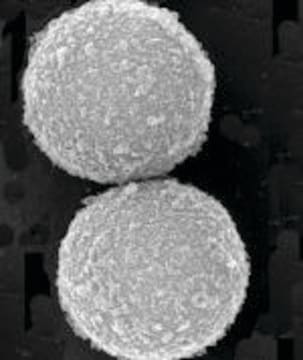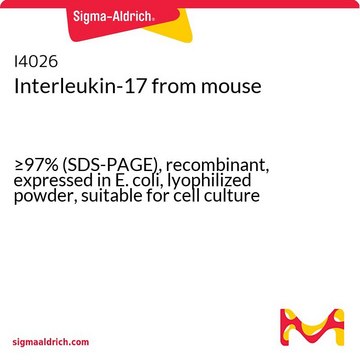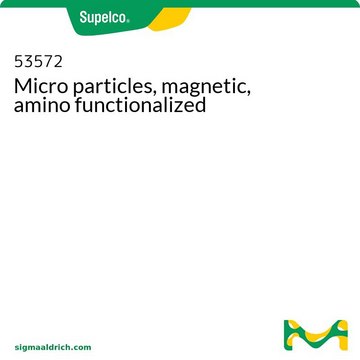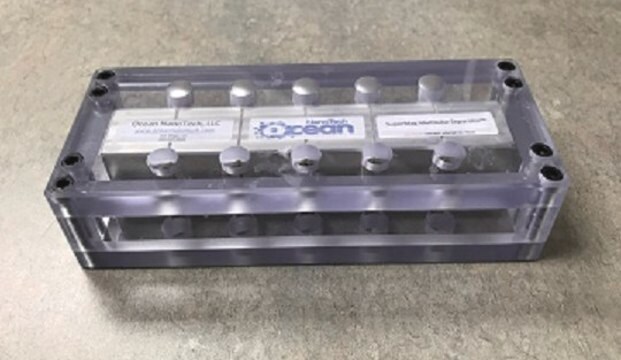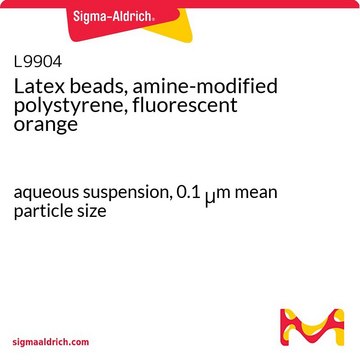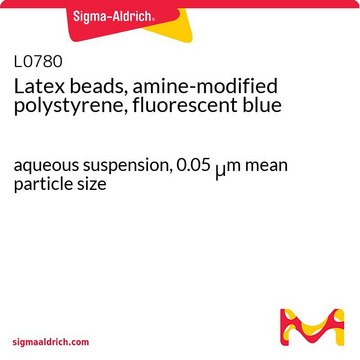I7643
Amine-terminated magnetic particles
50 mg/mL in deionized water
Se connecterpour consulter vos tarifs contractuels et ceux de votre entreprise/organisme
About This Item
Produits recommandés
Source biologique
synthetic (organic)
Forme
suspension
Concentration
50 mg/mL in deionized water
Ampleur du marquage
~12 μmol per mL
Technique(s)
affinity chromatography: suitable
Matrice
Superparamagnetic iron oxide particles, approx. 1 μm in size
Capacité
~10 mg/mL, protein coupling capacity (protein)
Adéquation
suitable for microbiology
Température de stockage
2-8°C
Application
Amine-terminated magnetic particles are buffered in an aqueous solution and used for affinity chromatography, protein chromatography and activated/functionalized matrices. Amine-terminated magnetic particles have been used in the development of methods to detect Mycobacterium tuberculosis and Herpes Simplex Virus-1.
Code de la classe de stockage
11 - Combustible Solids
Classe de danger pour l'eau (WGK)
WGK 3
Point d'éclair (°F)
Not applicable
Point d'éclair (°C)
Not applicable
Faites votre choix parmi les versions les plus récentes :
Déjà en possession de ce produit ?
Retrouvez la documentation relative aux produits que vous avez récemment achetés dans la Bibliothèque de documents.
Les clients ont également consulté
David A C Thomson et al.
The Analyst, 136(8), 1599-1607 (2011-03-04)
Amplification-free detection of nucleic acids in complex biological samples is an important technology for clinical diagnostics, especially in the case where the detection is quantitative and highly sensitive. Here we present the detection of a synthetic DNA sequence from Herpes
Feng Wang et al.
Bioresource technology, 101(23), 8931-8935 (2010-07-27)
Newly large-pore magnetic mesoporous silica nanoparticles (MMSNPs) with wormhole framework structures were synthesized for the first time by using tetraethyl orthosilicate as the silica source and amine-terminated Jeffamine surfactants as template. Iminodiacerate was attached on these MMSNPs through a silane-coupling
Edith Torres-Chavolla et al.
Biosensors & bioelectronics, 26(11), 4614-4618 (2011-05-28)
The present study describes the development of a DNA based biosensor to detect Mycobacterium tuberculosis using thermophilic helicase-dependent isothermal amplification (tHDA) and dextrin coated gold nanoparticles (AuNPs) as electrochemical reporter. The biosensor is composed of gold nanoparticles (AuNPs) and amine-terminated
Notre équipe de scientifiques dispose d'une expérience dans tous les secteurs de la recherche, notamment en sciences de la vie, science des matériaux, synthèse chimique, chromatographie, analyse et dans de nombreux autres domaines..
Contacter notre Service technique
